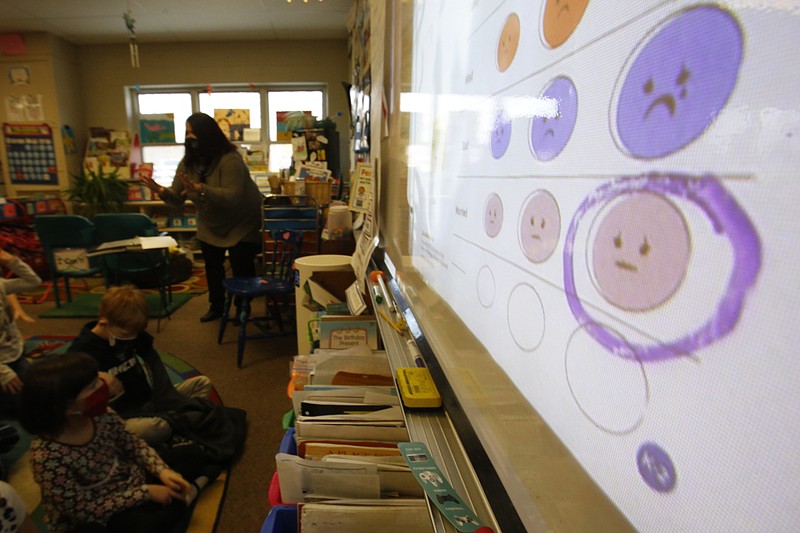After reading the well-being surveys that were expected to be given to Hamilton County School students Monday, we're not sure how much concrete information will be gleaned with the answers that are received.
The topic of the surveys came up during last week's Hamilton County Board of Education meeting, with member Rhonda Thurman calling them a waste of time and Superintendent Justin Robertson saying they can be a "key" for teachers to understand their students.
Parents were allowed to opt out by going to the Hamilton County Schools website.
To be sure, if the surveys are answered truthfully by a student with a good grasp on vocabulary and a deep understanding of how outside factors can contribute to success in school or the lack thereof, they might identify barriers that would keep that student from learning, suggest a method in which that student might be assisted or denote a class trend that might suggest a change in teaching style.
While the surveys are said to take 10 to 20 minutes to complete, they ideally should take more time if students are to truly give the questions some thought. But 10 or 20 minutes out of one day in a school year is not taking too much time away from academics, which was Thurman's concern.
(READ MORE: Student well-being survey sparks debate among Hamilton County school board members)
However, if 10 or 20 minutes out of the one day can help teachers and administrators assist one or more students in each class, the surveys are worth administering.
We are less confident about the survey's success in identifying any decisions that might be made at the school level, which Robertson said they might, or at the classroom level.
After all, the very reason the surveys are given in the first place suggests that some students will not have the capacity to answer questions like "how calm are you able to remain?" or how possible it is to change "how easily you give up." Even adults would need to give the answers to such questions some thought.
Such questions are asked of students as young as third grade. Different content is given for grades 3-5 and for grades 6-12. In grades kindergarten through 2, the survey answers -- fewer than in other grades -- are a perception of the student by the teacher.
We agree with Thurman that "we used to be a lot more concerned about academics" and agree somewhat that "we've just gone off to where we're more concerned about social issues," but we think it's fairly clear that identifying some issues students are dealing with may give teachers and administrators insight into being able to help them.
It's not the norm now, nor has it been for many years, that most students come from two-parent families, live in a home, have plenty to eat, get plenty of rest, never deal with stress and have someone at home to assist them with homework or the acquisition of materials for school.
The answers to some of the questions, if especially the younger students grasp their meaning, might offer clues to anger, hyperactivity and time management. Although there is great danger is making assumptions from the answers to one survey, the answers nevertheless could suggest additional testing, doctor visits or a home visit from a social worker.
However, each child is different, and what remedies might be suggested for one child who expresses on the survey an inability to keep temper under control might be totally wrong for another child.
If additional information can be detected about specific children that would help them learn better, they in turn likely would spend more time on the academics that Thurman is rightly concerned about.
Fortunately, counselors in some Hamilton County Schools offer brief social-emotional learning opportunities that may serve as a break between subjects for the teachers and can give students something to think about concerning an issue they may be dealing with or may be wondering about.
If the results from the surveys indicate a number of students in one class are dealing with a particular issue, they may suggest a particular subject area presentation by the school counselor during an upcoming social-emotional learning segment.
Robertson said "what we have committed to is saying that we are going to personalize education for students." Certainly, the surveys from the Boston-based independent education technology company Panorama Education can help with that if they are completed soundly and interpreted as but one tool in sizing up a student.
The superintendent says the district has only a one-year contract with the company. Given the difficulty it is for many students to formulate an answer to such thought provoking questions in the 10 to 20 minutes they are given for the survey, we suggest the district not abandon offering the surveys but come up with a simpler alternative locally and not extrapolate the answers beyond the individual student.
